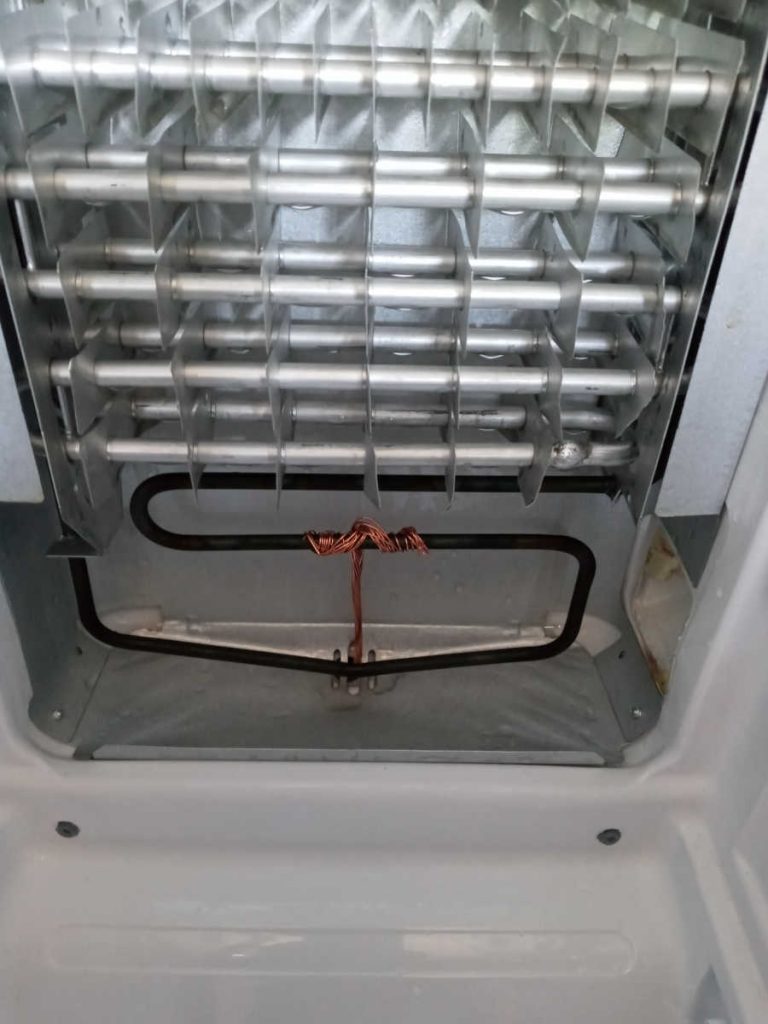We have a Samsung RS261MDBP refrigerator, which is a side-by-side, frost-free model, with the freezer on the left, and refrigerator on the right.
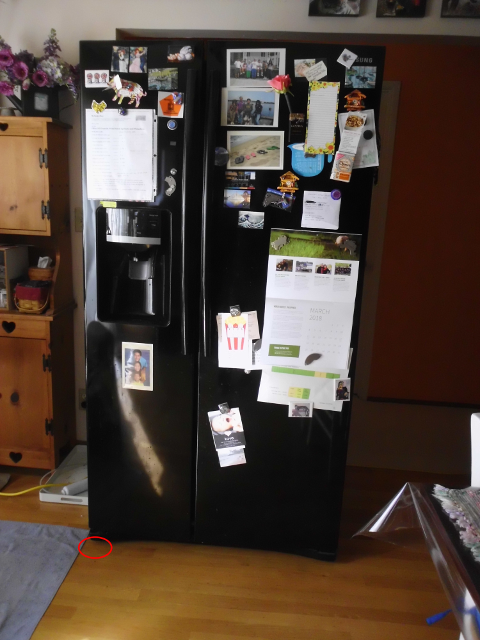
One day, I noticed a puddle of water on the floor under the freezer. Since it was on the side with the water/ice dispenser, my first thought was that it might be the dispenser leaking. But then I opened the freezer door and noticed a frozen stream of water coming from inside the freezer. The freezer was still plenty cold, so I doubted it could be something melting. I took out the bottom drawer of the freezer, and then noticed a solid sheet of ice at the bottom of the freezer. I removed all the ice, and the problem went away for about a day, but then two days later, it was back, and so was the ice sheet. I never actually witnessed the water actively dripping.
Okay, nothing to do but roll up my sleeves, move all the food out of the freezer into an ice chest, and figure out what fed that ice sheet.
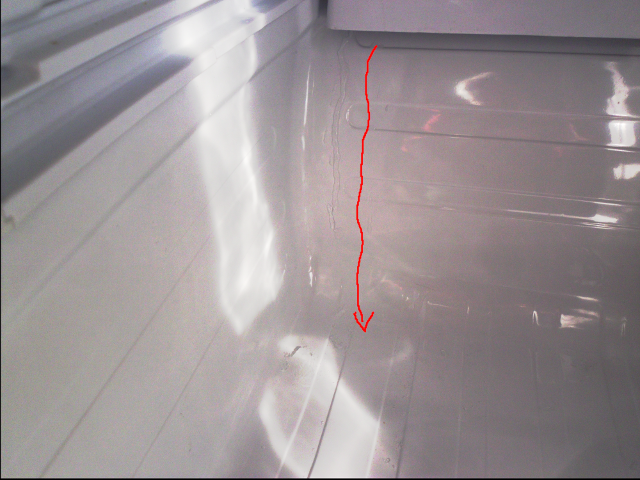
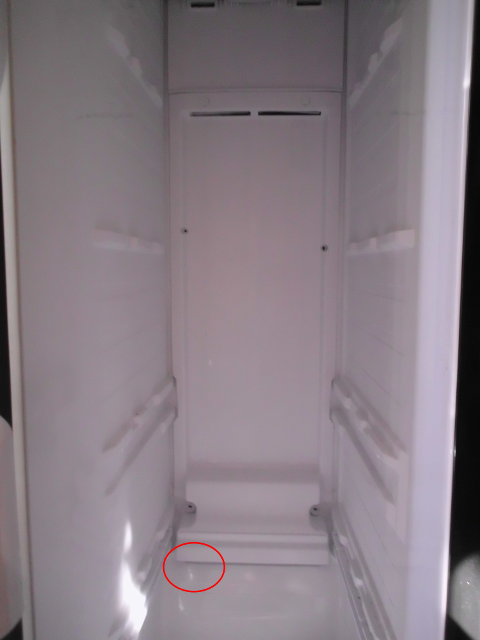
A bit of an aside as to how (I think) a frost-free freezer works. About once a day, a heater coil turns on for 5 minutes to melt off any frost that may have accumulated on the freezer coils. That water drips down into a pan under the refrigerator, where a fan evaporates it into the air. If that defrosting was happening at 3 am, it would explain why I never witnessed any actual dripping.
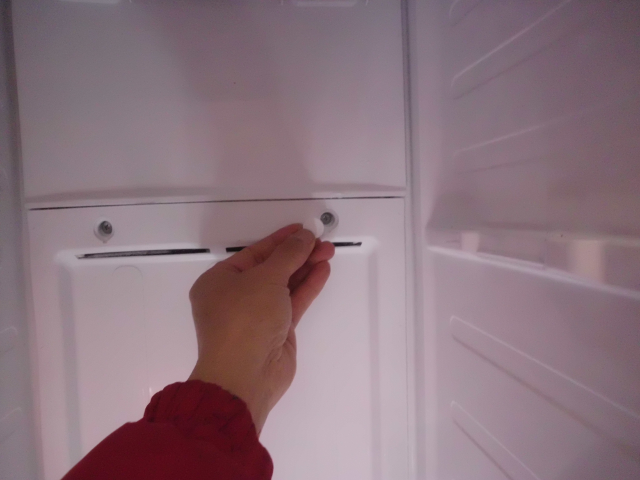
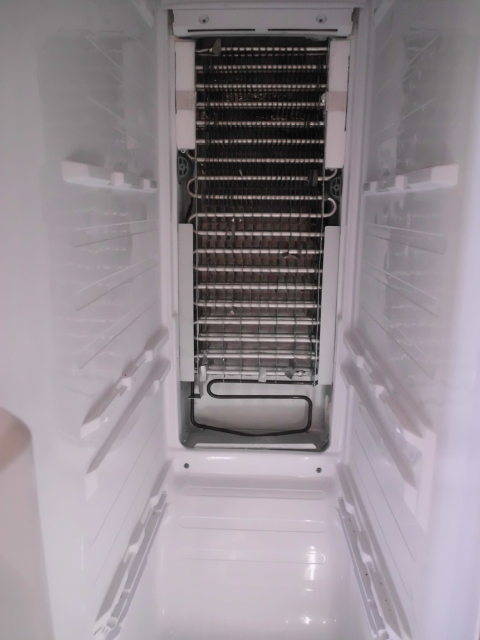
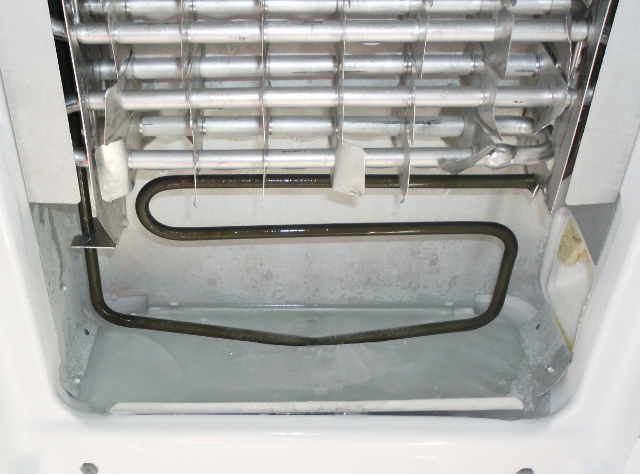
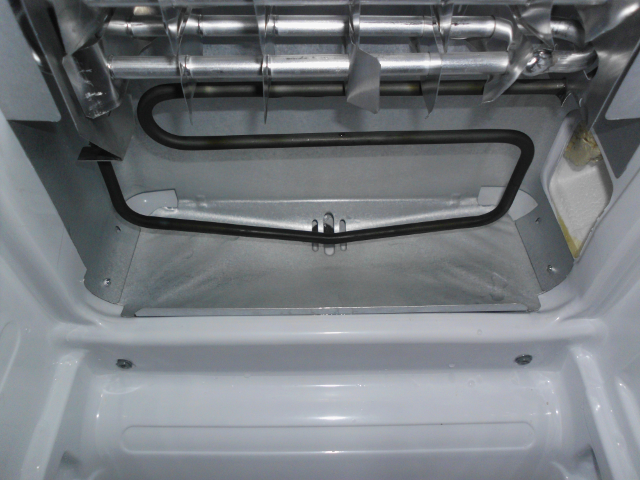

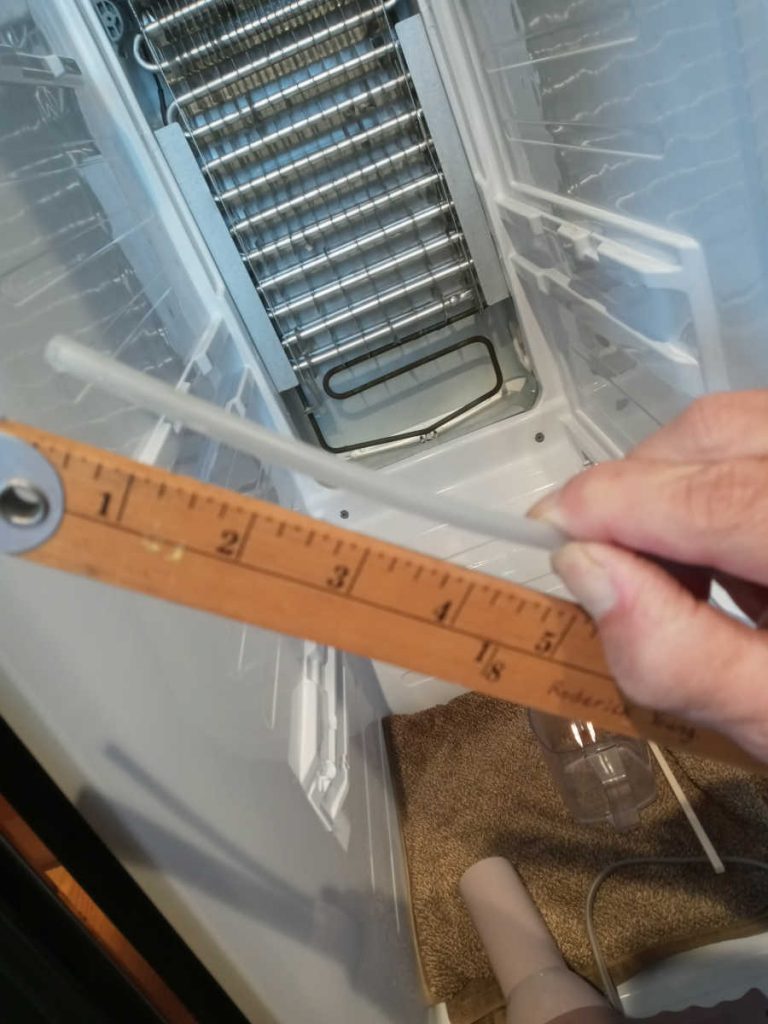
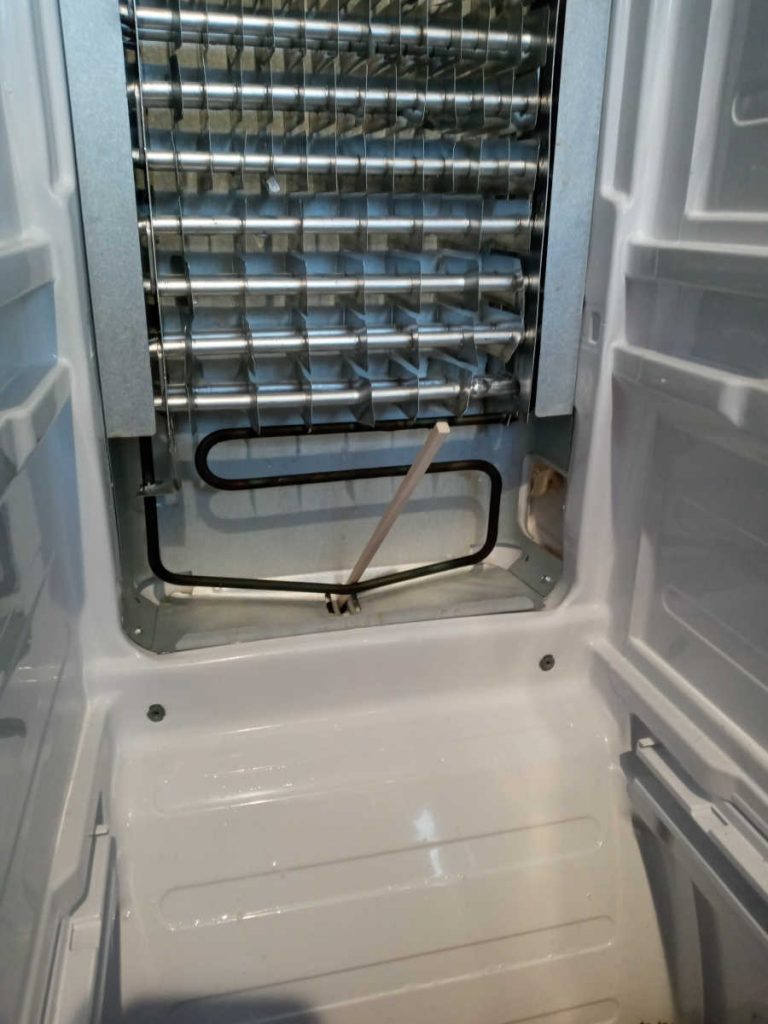
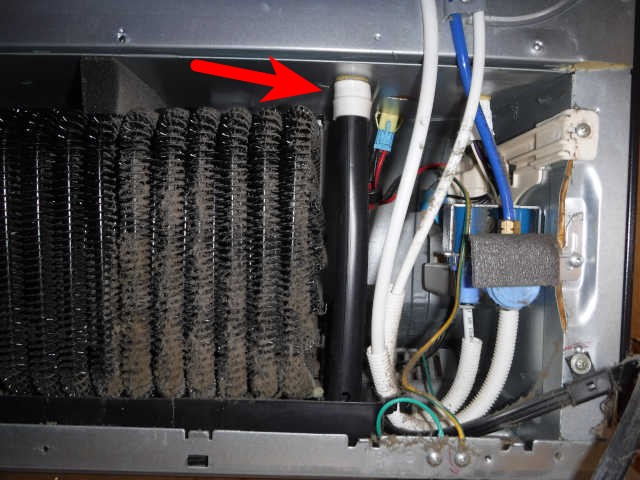
PRO TIP: It might be tempting to not bother taking the back cover off as above, but doing so will really save time and aggravation. The only sure way to check if the drain is clear is to look for water coming down into the pan at the bottom of the black tube. I heard a “glug, glug, glug” sound initially, but nothing was actually coming out. Only when I blew air in with the straw did I see water drain quickly into the pan.
Elapsed time to fix, including moving frozen food to another freezer and ice chest: 2.5 hours. I left the refrigerator food in place.
Most likely, the drain had been clogged with ice, more than the defroster could melt in 5 minutes. I melted and cleaned out every bit of ice that I could see, and made sure that when I poured a half cup of water into the drain, it freely flowed into the evaporation pan under the fridge. Success. I put everything back together, and it’s been working fine for a month, now.
But how did this situation come about in the first place? My theory is that the freezer door had been open for a LONG time in humid weather, as we were reorganizing the freezer. Possibly, that gave an excessive amount of frost a chance to accumulate, and block the defroster drain.
UPDATE: The fix worked for about a year, then the problem came back. Cleared the drain again, and the problem came back after a few weeks. It occurred to me that what might help would be something to defrost the drain itself. I later realized that someone else had come up with the same solution before me, and posted this on YouTube.
